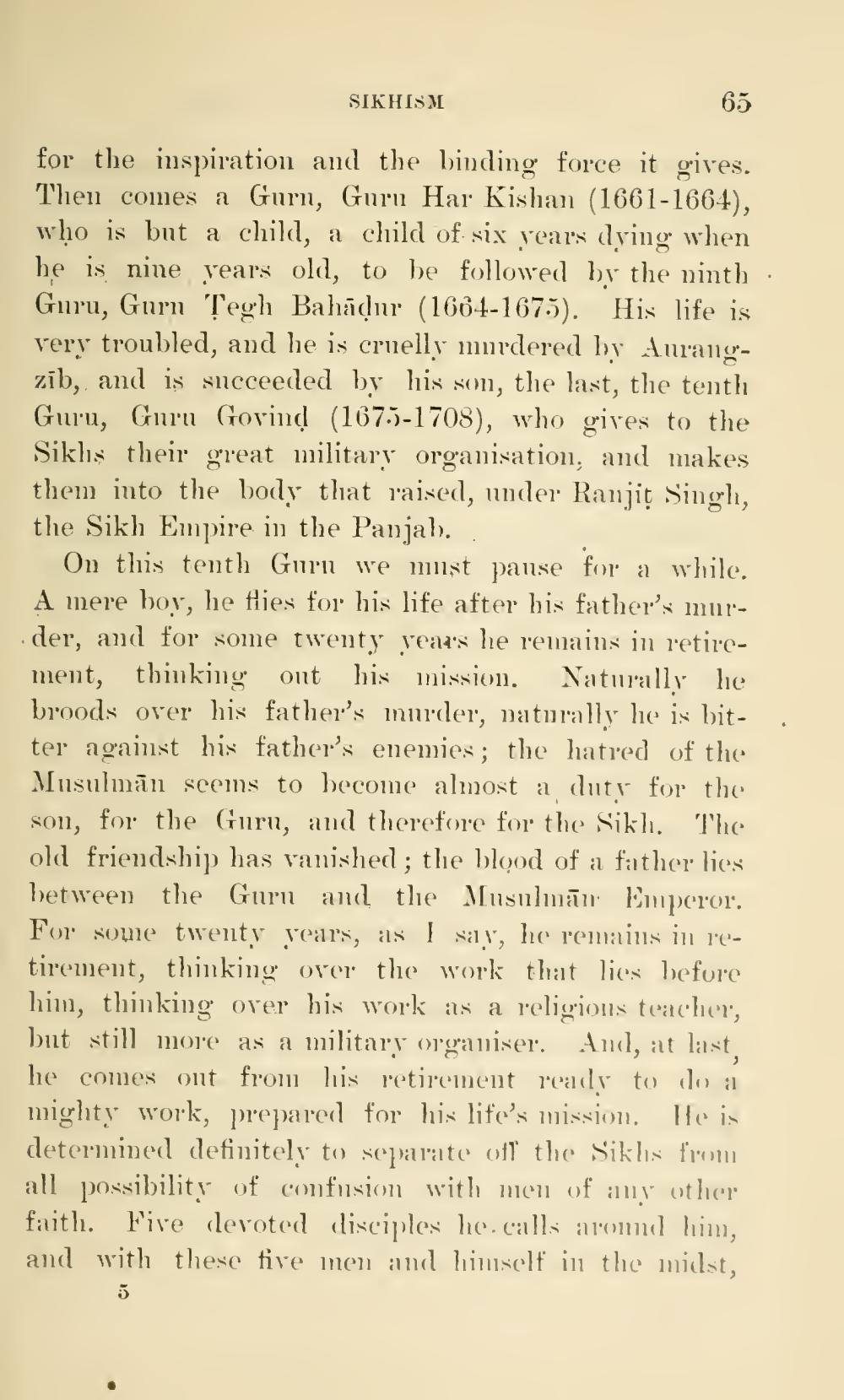________________
SIKHISM
65
for the inspiration and the binding force it gives. Then comes a Gurn, Guru Har Kishan (1661-1664), who is but a child, a child of six years dying when he is nine years old, to be followed by the ninth · Guru, Guru Tegh Bahadur (1664-1675). His life is very troubled, and he is cruelly murdered by Aurangzib, and is succeeded by his son, the last, the tenth Guru, Guru Govind (167.5-1708), who gives to the Siklis their great military organisation, and makes them into the body that raised, under Ranjit Singh, the Sikh Empire in the Panjab..
On this tenth Guru we must pause for a while. A mere boy, he flies for his life after his father's murder, and for some twenty years he remains in retirement, thinking ont his mission. Naturally he broods over his father's murder, naturally he is bitter against his father's enemies; the hatred of the Musulmān seems to become almost a dutr for the son, for the Guru, and therefore for the Sikh. The old friendship has vanished; the blood of a father lies between the Guru and the Musulmā Emperor. For some twenty years, as I say, he remains in retirement, thinking over the work that lies before him, thinking over his work as a religions teacher, but still more as a military organiser. And, at last, he comes out from his retirement ready to do a mighty work, prepared for his life's wission. He is determined definitely to separate of the Siklis from all possibility of confusion with men of any other faith. Five devoted disciples he calls around him, and with these five men and himself in the midst,




